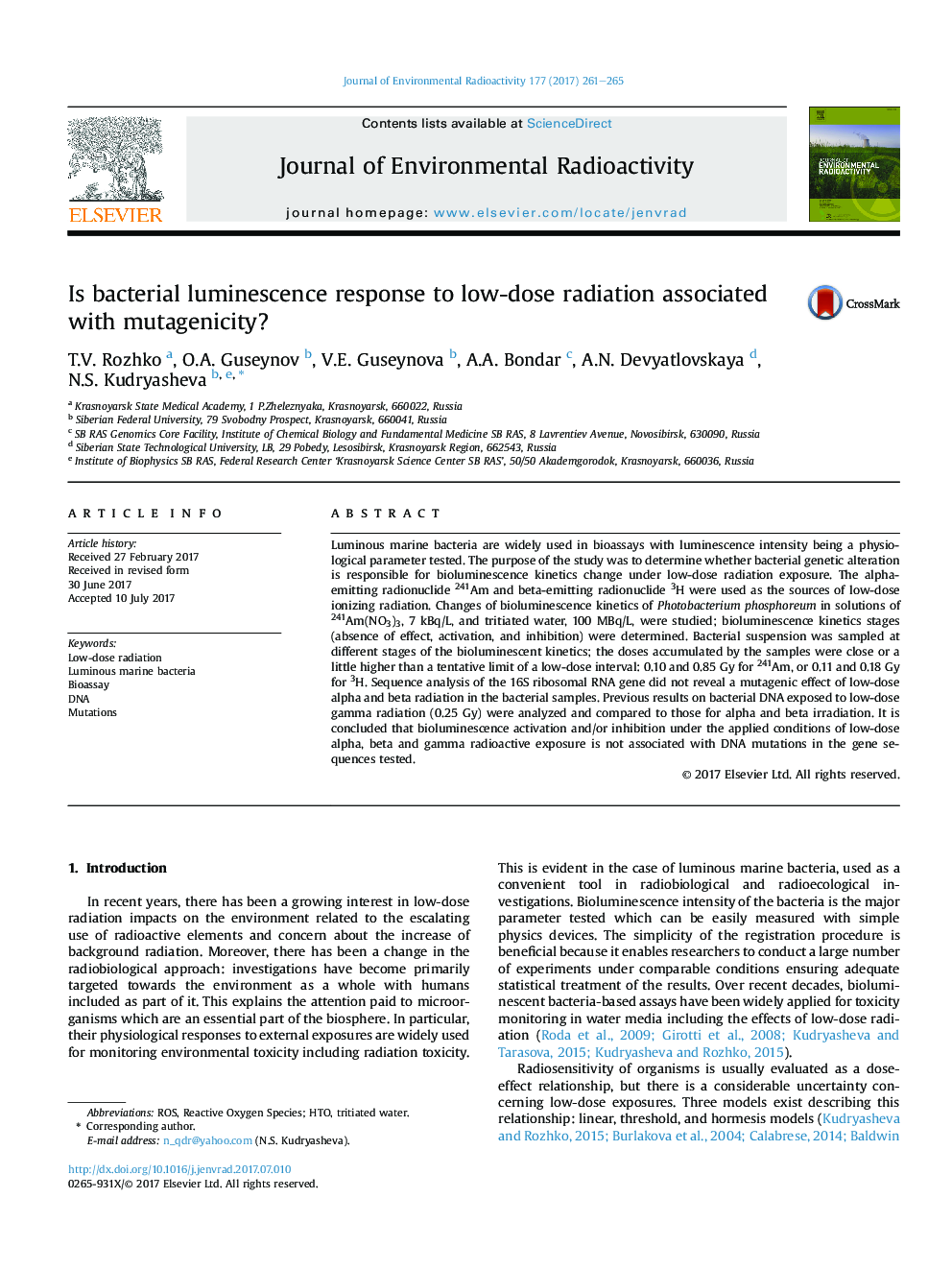| Article ID | Journal | Published Year | Pages | File Type |
|---|---|---|---|---|
| 5477481 | Journal of Environmental Radioactivity | 2017 | 5 Pages |
Abstract
Luminous marine bacteria are widely used in bioassays with luminescence intensity being a physiological parameter tested. The purpose of the study was to determine whether bacterial genetic alteration is responsible for bioluminescence kinetics change under low-dose radiation exposure. The alpha-emitting radionuclide 241Am and beta-emitting radionuclide 3H were used as the sources of low-dose ionizing radiation. Changes of bioluminescence kinetics of Photobacterium phosphoreum in solutions of 241Am(NO3)3, 7 kBq/L, and tritiated water, 100 MBq/L, were studied; bioluminescence kinetics stages (absence of effect, activation, and inhibition) were determined. Bacterial suspension was sampled at different stages of the bioluminescent kinetics; the doses accumulated by the samples were close or a little higher than a tentative limit of a low-dose interval: 0.10 and 0.85Â Gy for 241Am, or 0.11 and 0.18Â Gy for 3H. Sequence analysis of the 16S ribosomal RNA gene did not reveal a mutagenic effect of low-dose alpha and beta radiation in the bacterial samples. Previous results on bacterial DNA exposed to low-dose gamma radiation (0.25Â Gy) were analyzed and compared to those for alpha and beta irradiation. It is concluded that bioluminescence activation and/or inhibition under the applied conditions of low-dose alpha, beta and gamma radioactive exposure is not associated with DNA mutations in the gene sequences tested.
Related Topics
Physical Sciences and Engineering
Energy
Nuclear Energy and Engineering
Authors
T.V. Rozhko, O.A. Guseynov, V.E. Guseynova, A.A. Bondar, A.N. Devyatlovskaya, N.S. Kudryasheva,
